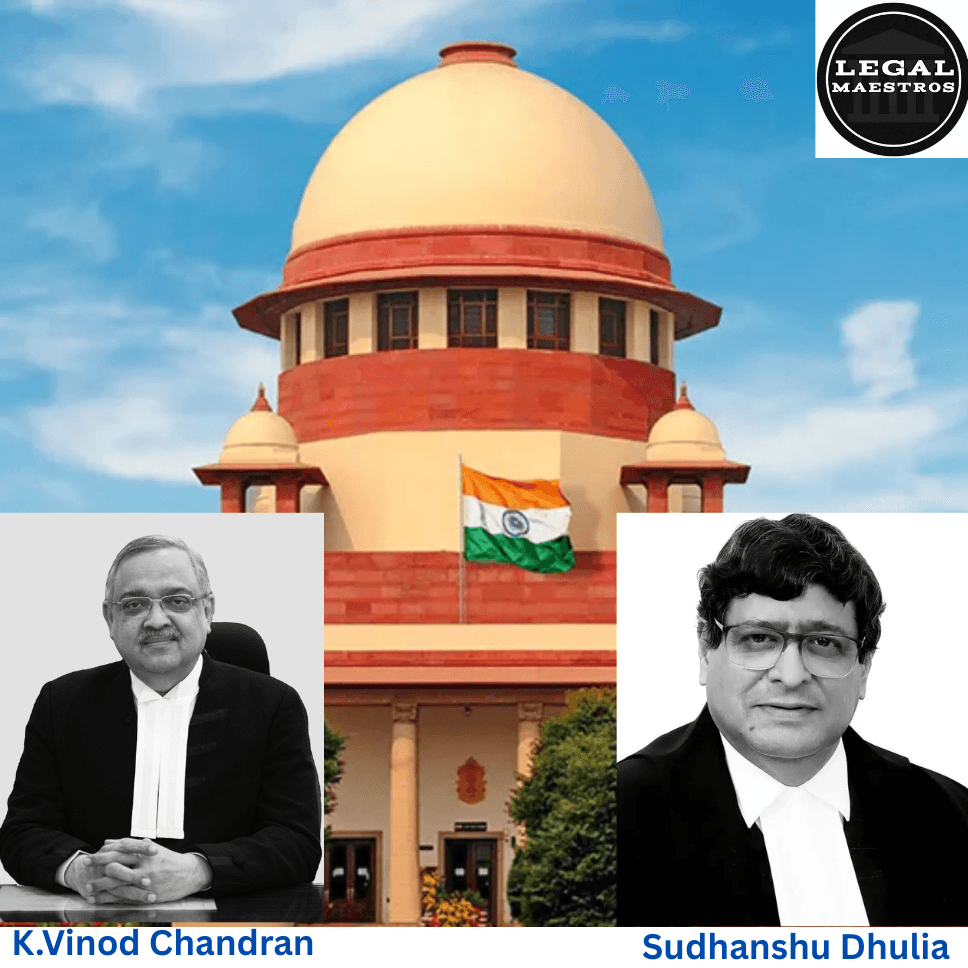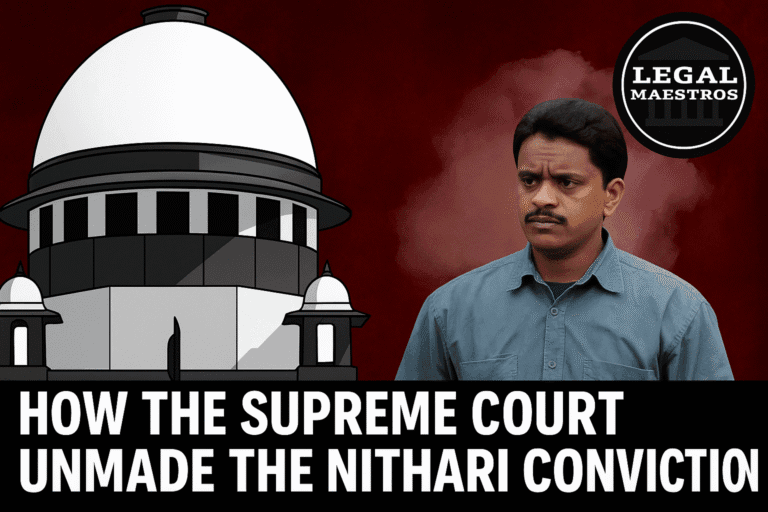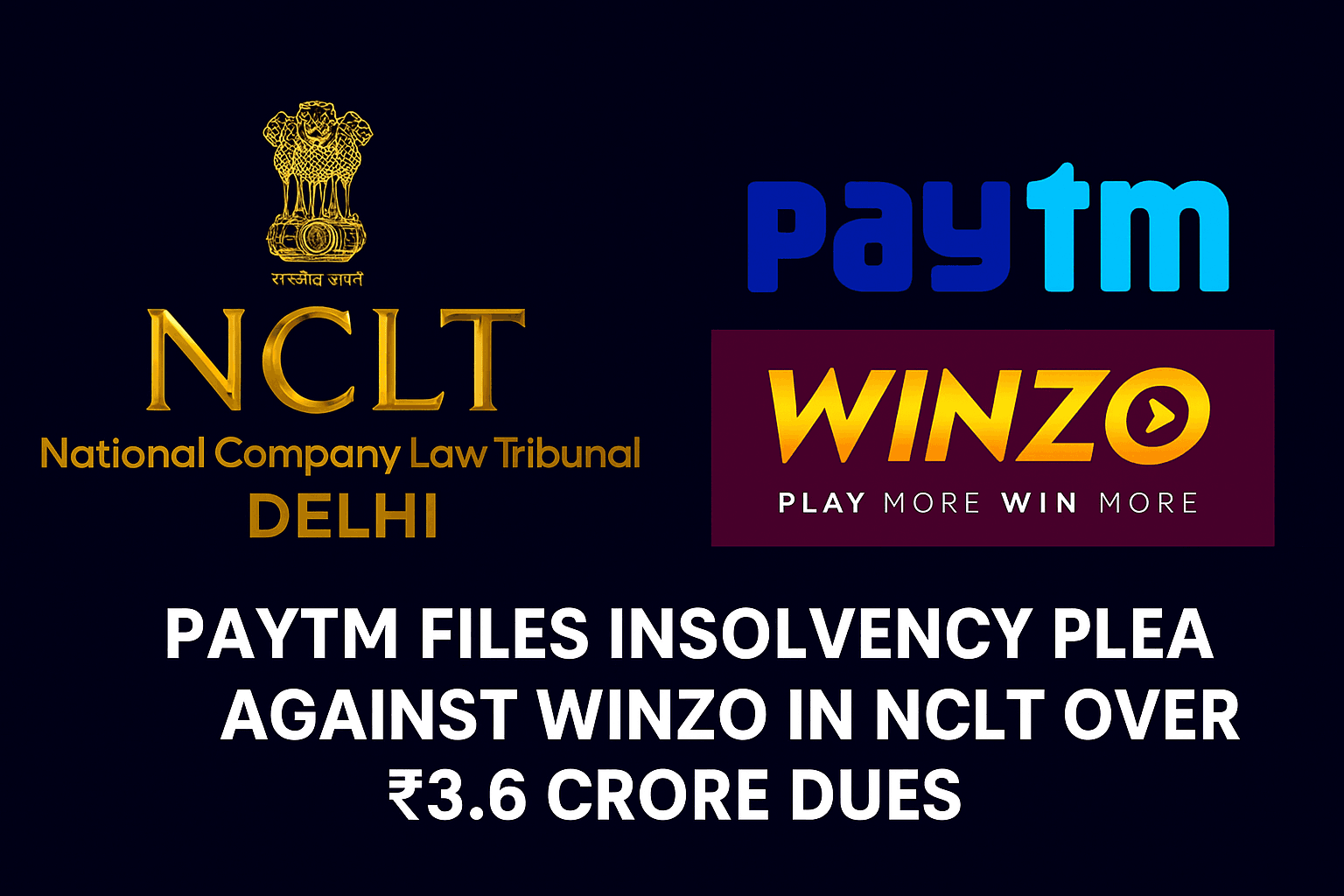
Justice Sudhanshu Dhulia and Justice K. Vinod Chandran Defend Linguistic Diversity in Municipal Governanc
Introduction
A major decision was handed down by the Supreme Court of India on April 15, 2025, in the case of Mrs. Varshatai Bagade v. State of Maharashtra and Others. The dispute concerned the use of Urdu in addition to Marathi on the signboard of a municipal building. Both languages were included in the order. In the appeal that was submitted by a former member of the municipal council, who challenged the use of Urdu on the grounds that Marathi was the only official language of Maharashtra, the two-judge bench that consisted of Honorable Mr. Justice Sudhanshu Dhulia and Honorable Mr. Justice K. Vinod Chandran dismissed the petition. In its decision, the Supreme Court affirmed the idea of inclusive communication in governance and underlined that language serves as a cultural bridge rather than a political or religious barrier.
The Reality of the Situation
The appellant, who had previously served on the Municipal Council of Patur, which is located in the Akola District of Maharashtra, raised a complaint regarding the usage of Urdu on the signboard of the latest municipal council building that was completed. Marathi was written at the top of the signboard, and Urdu was written below it. The signboard said “Municipal Council, Patur.” The appellant stated that all official work must be carried out solely in Marathi, and that it is against the law to use any other language, even for the purpose of signs.
She initially voiced her opposition in front of the Municipal Council, which ultimately decided to reject it through a resolution that was approved by a majority vote. The decision stated that the addition of Urdu was justifiable because a sizeable portion of the local population was able to communicate in the language. The problem was subsequently brought to the attention of the Collector in accordance with Section 308 of the Maharashtra Municipal Council, Nagar Panchayat, and Industrial Township Act, 1965. The Collector granted the request of the appellant and issued an order to remove Urdu from the signboard within the municipality.
For any queries or to publish an article or post or advertisement on our platform, do call at +91 6377460764 or email us at contact@legalmaestros.com.
The order issued by the Collector was challenged by the members of the Municipal Council in front of the Divisional Commissioner, who ultimately overturned it. Following that, the appellant went to the Bombay High Court, which denied her plea and upheld the decision made by the council. She filed a petition for special leave with the Supreme Court because she was dissatisfied with the situation.
There are provisions that are at issue in the dispute.
Section 308 of the Maharashtra Municipal Council Act, 1965, and the Maharashtra Local Authorities (Official Languages) Act, 2022 were the primary legislative provisions that were applicable to this particular case. Both the question of whether or not the Collector had the authority to suspend a resolution passed by a municipal council and the question of whether or not the law of 2022 barred the use of languages other than Marathi for public signage were related to the problem.
Just prior to the adjustment that was made to Section 308 in 2018, the Collector had the authority to unilaterally postpone or halt the enforcement of any council resolution that was found to be unlawful or detrimental to the public interest. In spite of this, the Collector will only be able to take action after receiving a proposal from the Chief Officer of the council once the change has been implemented. A private individual, who will be referred to as the appellant, had presented the proposal in this particular instance, rather than the Chief Officer. The order of the Collector was declared null and void by the Supreme Court since it was determined that the Collector lacked the authority to act on such an application.
For any queries or to publish an article or post or advertisement on our platform, do call at +91 6377460764 or email us at contact@legalmaestros.com.
Section 3 of the 2022 Act, which designates Marathi to be the official language for all communications and signs of local governments, was the second clause that was given careful consideration. On public boards and displays, the appellant asserted that the legislation made it obligatory to speak exclusively Marathi while communicating with the public. On the other hand, the Court discovered that the Act did not contain any clauses that prohibited the use of additional languages. Marathi is the only language that is required to be used, however the law does not prohibit the use of other languages for the purpose of facilitating contact with a wider audience.
A Discussion of the Most Important Constitutional Principles
The decision involves significant interpretations of Article 345 of the Constitution, which grants state legislatures the authority to choose one or more official languages for the purpose of government communication. It was confirmed by the Court that the adoption of Marathi as an official language does not preclude the usage of other languages such as Urdu from being utilized. The judges referred to previous decisions made by the Supreme Court, particularly the case of Uttar Pradesh Hindi Sahitya Sammelan v. State of Uttar Pradesh (2014), in which it was decided that states have the ability to adopt numerous official languages if they so want.
There was a strong emphasis placed on the fact that language is not a symbol of religion or politics but rather a tool for communication. They cautioned against conflating linguistic diversity with identification with a particular religion. According to what they said, Urdu is not the language of a single faith or group, but rather the language of a significant portion of the population of India, covering a wide range of states, regions, and communities.
For any queries or to publish an article or post or advertisement on our platform, do call at +91 6377460764 or email us at contact@legalmaestros.com.
Urdu’s significance in India’s cultural and legal history is emphasized here.
The Court held a discussion that was both impassioned and academic in nature, focusing on the origin, status, and cultural function of Urdu in India. According to the information provided, Urdu, along with Marathi and Hindi, is an Indo-Aryan language that originated on Indian territory. Despite the widespread belief to the contrary, Urdu is not a foreign language nor is it a religious language. In addition to being included in the Eighth Schedule of the Constitution, it is extensively spoken throughout the entirety of India. Based on the results of the Census conducted in 2011, Urdu was ranked as the sixth most spoken language in the country.
The verdict outlined the historical significance of Hindustani, which is a combination of Hindi and Urdu, and brought attention to the fact that numerous national leaders, such as Mahatma Gandhi and Jawaharlal Nehru, had urged for it to be used as a common national language. Hindi, on the other hand, became the official language of the Union when Hindustani was relegated to the background as a result of the political upheavals that occurred after the Partition.
In spite of these advances, Justice Dhulia made the observation that the language used by Indians in their everyday lives is still a combination of Hindi and Urdu. It was brought to his attention that Urdu terminology are profoundly ingrained in the legal and administrative vocabulary of India. He mentioned that terms such as “halafnama” (affidavit), “peshi” (appearance), and “vakalatnama” (authorization) are still frequently utilized in the judicial system.
For any queries or to publish an article or post or advertisement on our platform, do call at +91 6377460764 or email us at contact@legalmaestros.com.
For More Updates & Regular Notes Join Our Whats App Group (https://chat.whatsapp.com/DkucckgAEJbCtXwXr2yIt0) and Telegram Group ( https://t.me/legalmaestroeducators )
The importance of language as a symbol of inclusiveness
It was clearly established by the Court that the utilization of an extra language, such as Urdu, in addition to Marathi does not constitute a violation of any legal provision. Instead, it expresses an effort to communicate with a greater number of individuals. The purpose of a signboard is to communicate clearly with the residents of an area, and if a large number of people in the locality understand Urdu, it makes perfect sense to include it on the board.
Additionally, the Court cautioned against permitting language chauvinism to drive the direction of public policy on its own. Language, it said, is not just a medium of instruction or governance but a part of people’s identity and culture. Excluding a language because of political or religious assumptions is against the spirit of the Constitution.
For any queries or to publish an article or post or advertisement on our platform, do call at +91 6377460764 or email us at contact@legalmaestros.com.
Justice Dhulia eloquently wrote that **language must unite, not divide**. He reminded the nation of India’s linguistic richness and diversity, mentioning that the country has over 270 mother tongues. In this context, insisting on the use of only one language in local governance was viewed as regressive and unconstitutional.
Final Verdict of the Supreme Court
The Supreme Court dismissed the appeal and upheld the High Court’s judgment. It concluded that there was no illegality in the Municipal Council’s resolution to include Urdu on its signboard. The Collector’s order was invalid since it was not based on an application from the Chief Officer, and the 2022 Act did not bar the use of additional languages like Urdu. The Court appreciated the High Court’s balanced interpretation of the law and agreed with its reasoning.





![Research Assistantship @ Sahibnoor Singh Sindhu, [Remote; Stipend of Rs. 7.5k; Dec 2025 & Jan 2026]: Apply by Nov 14, 2025!](https://legalmaestros.com/wp-content/uploads/2025/11/Gemini_Generated_Image_s0k4u6s0k4u6s0k4-768x707.png)
![Karanjawala & Co Hiring Freshers for Legal Counsel [Immediate Joining; Full Time Position in Delhi]: Apply Now!](https://legalmaestros.com/wp-content/uploads/2025/11/Gemini_Generated_Image_52f8mg52f8mg52f8-768x711.png)